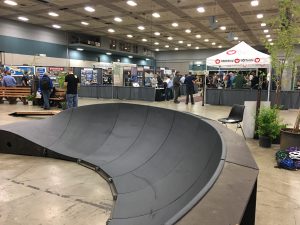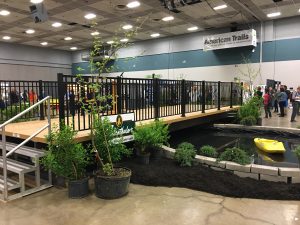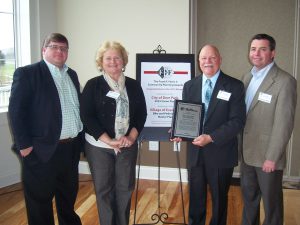Funding Specialist, Joe Cottrill, Joins The Kleingers Group
The Kleingers Group is pleased to announce the addition of Funding Specialist, Joe Cottrill. Clients can expect to benefit from Mr. Cottrill’s extensive knowledge of available funding, application processes, and guidelines. He will assist and advise Kleingers’ clients regarding potential funding for the community’s capital improvement projects.
Joe served 22 years as Project Funding Coordinator with the Hamilton County Engineer’s Office where he gained in-depth knowledge of local, state, and federal funding programs through his involvement with the State Capital Improvement Program, Local Transportation Improvement Program, Small Government Commission Funds, Municipal Road Fund, Clean Ohio Revitalization Fund, and the Job Ready Sites Program.
Here, Joe was responsible for administrating the laws of ORC to make the Ohio Public Works, work. Joe was also responsible for advertising programs for upcoming funding rounds, reviewing applications, establishing the rating scores, and making recommendations.
He also served as the Liaison Officer for the Ohio Public Works Commission District 2 Integrating Committee for 22 years. He was awarded a Certificate of Appreciation from the Ohio Legislature in 2010 for his work with the District 2 Integrating Committee. Joe also was with the Washington County Engineer’s Office in Marietta, OH for eleven years as a design technician and bridge inspector before moving to Cincinnati. Here Joe developed his bridge inspection experience.
His career in the industry began at the age of 15, where he began work for his father’s company, Calvin Construction Company until he left for college. The construction company, since dissolved, specialized in roadways, bridges, and dams. In Joe’s years with his dad’s company, he earned money to help put himself through college and gained tremendous knowledge about public construction. Joe received his B.A. degree in Theology from Bob Jones University in Greenville, SC in 1982.
When asked why Joe chose to join The Kleingers Group, he responded,
“I was motivated the most by my knowledge of Kleingers’ good reputation in the industry. Their plans are well thought out and helped make my life easier for my colleagues at the County, especially the reviewers. When engineers do not take the time to think through their designs, it makes life a lot tougher for reviewers. Kleingers is known for their high-quality work, which is always well thought out.”
He also went on to share that he has known Tim Casto for a long while and how the two of them became good friends over time.
Joe retired from public service in December 2010 and has worked in the private sector since. He is married to Kimberly Steele Cottrill, has two grown children, and an adorable dog named Sophie (who runs the house). In his spare time, Joe enjoys building scale models of cars and trucks. He claims he is not a ‘Master Modeler’ (which is apparently a real job in the scale model world), he plans to stick to just the hobby.
Kleingers at the 2017 International Trail Symposium
The Kleingers Group recently spoke at the 2017 International Trail Symposium held in Dayton, Ohio. The educational conference brings together experts from all across the globe to learn more about trail system challenges, successes, and progressive ideas. We were inspired by so many ideas and conversations shared during the conference that we thought we would share some of our thoughts with you.
See our takeaways from speaking/attending below:
Sharing International Challenges and Successes
- Those in attendance during our speaking session included individuals from Brazil, El Salvador, Idaho, and New England (just to name a few). It was incredible to sit alongside others from all across the globe, discussing similar challenges, programs, and worldwide support for creating trails to connect people across the earth.
- Much like what we see in areas where we perform trail engineering and design services, many cities across the globe have been built around a single mode of transportation – cars.
- In general, Ohio has created many fantastic ‘destination trails’ where families travel by car, with bikes in tow, for recreation. Recreational communities across the state have done a great job creating these core recreation destinations. The challenge now is to create paths that connect these destinations with the people of the area.
Dayton Sets an Example for Others Across the Globe

More than just trails and paths, extreme biking paths were demonstrated at the symposium.
- Dayton has such a rich history of those within the biking community. The Wright brothers and the founder of Huffy Bicycles both got their starts in the area.
- Dayton is home to the largest paved trail network in the United States.
- Following the Great Miami River flood of 1913, the Miami Conservancy District was both created and funded locally. The organization set out to build levees in the area and eventually turned its attention to focus on water activity and then trails.
- Many organizations across the country look to the conservancy as a leading example. The district has found ways to continue funding the program which helps maintain the trails in the area, including winter plowing, ADA upgrades, and more – typically a challenge for trail owners.
- The Dayton area is also known in the trail community for Huffy’s ‘Rails to Trails’ conservancy program developed in the 1970s, before converting old rail lines to bike trails was popular.
- Large metropolitan stakeholders across the globe are just now getting programs in place and look to the Dayton area as a leading example.
Changing our approach to trails through progressive examples for funding area complete streets.
- Historically, money is spent ordinarily on the right-of-way for roadways. Complete streets is a way of approaching how best to a projects’ right-of-way while generating modes of transportation and access for all-wheel riders (aside from cars).

Prefabricated bridge showcased in the exhibit space.
How is The Kleingers Group affecting change in the area?
- As one example, Kleingers currently serves as the City of Wilmington, Ohio’s municipal engineer. We have been working with the city to set in place an active transportation plan which focuses on multi-modal transportation with complete street elements so that when new projects are completed within the city, they will comply with the program. The results will be a community that is not only multi-modal but a desirable place to live, work and play.
- Kleingers was recently awarded a fourth task order with ODOT for Safe Routes to Schools and Pedestrian Safety. We have an ongoing commitment to design multi-modal paths for school districts and local governments while creating a safe and healthy means of travel for students and families all across the State of Ohio.
Successful trails not only encourage healthy living and help reduce the carbon footprint; studies have shown they also increase property values for those adjacent to and in close proximity to the path. If we can consider the above successes, challenges, and creative approaches to constructing paths and trails for recreation and commuters alike, then we can (alongside others across the globe) create more desirable places to live and enjoy.
What’s the Back-Up Plan? Changing the Parking Scheme on Blue Ash Road
Backing out of 90-degree on-street parking into a busy road is generally recognized as a very dangerous parking maneuver. Drivers often can’t get a good view of oncoming traffic before pulling into it, leading to driver anxiety and accidents.
So when The Kleingers Group started a safety improvement study for Blue Ash Road in the City of Deer Park, the existing 90-degree on-street parking was a major concern.
The transportation and infrastructure group used Miovision Scout Data Collectors—a camera that records video for use in data collection and observation—to observe parking maneuvers along the corridor. With video capture, they were able to cost-effectively perform over a day’s worth of observations at a birds-eye view.
What they found was surprising: a good portion of drivers were already backing into the existing 90-degree parking spaces to enable themselves to be able to see when they pulled out later.
This knowledge led The Kleingers Group to consider reverse angle parking, an innovative solution.
Unlike traditional angled parking, in which drivers pull into a space head-on, reverse angle parking encourages drivers to drive just past an open space and back in, vastly improving visibility when they pull out. The result is parking that is safer for both drivers, cyclists, and pedestrians.
Although reverse-angle parking is less common than traditional angled parking, the data from video observation showed that a culture of backing into on-street parking already existed.
“We learned that a good portion of drivers were already making maneuvers similar to the changes we were proposing,” Traffic Engineer Dave Meyer said. “Reverse angle parking will allow much greater visibility when you are exiting a parking spot.”
Although education campaigns will still be necessary to acquaint residents with the alternative parking scheme, many drivers won’t have to substantially change their habits. By encouraging the remaining drivers to also back into their parking space, accidents should be reduced and parking will be safer for motorists, cyclists, and pedestrians.
The result is increased economic development—including visitors, shoppers, and diners—as people feel safer parking and, as a result, frequenting the area.
Improvements to Blue Ash Road are expected to be completed in 2019.
With Kleingers’ Help, Deer Park Vision Plan Wins Award
Congratulations to Jay Stewart and Tim Casto for their work on the Deer Park 2035 Vision Plan, which recently won the Frank F. Ferris II Planning Award in the Implementation category! The award honors local communities whose efforts have contributed to the elevation of planning principles, greater awareness of the value of planning and improved quality of life.
 The Kleingers Group drafted the Vision Plan with a heavy emphasis on the implementation of the key priority action items. Some of the key action items identified in the plan and implemented since the plan’s adoption in 2008 include:
The Kleingers Group drafted the Vision Plan with a heavy emphasis on the implementation of the key priority action items. Some of the key action items identified in the plan and implemented since the plan’s adoption in 2008 include:
- Update of the City Zoning Code – Following on the heels of adopting the Vision Plan, the City’s first implementation project involved the re-write of the City Zoning Code.
- Blue Ash Road Streetscape Project – With the help of the City’s planning consultant,The Kleingers Group, the OKI Regional Council of Governments; Ohio Department of Transportation; and Hamilton County Engineers, funding has been secured for the $6.5 million Blue Ash Road improvement project.
- Development of a Capital Improvement Plan – Acting on one of the key recommendations from the Vision Plan, Deer Park created and adopted its first Capital Improvement Plan.
- Creation of a Community Reinvestment Area (CRA) Tax Incentive Program – In September 2012, the Deer Park Council designated the entire City as a Community Reinvestment Area (CRA) to provide tax incentives to property owners to encourage new investment.
- Creation of a Community Improvement Corporation (CIC) – Created in February 2011, the Deer Park Community Improvement Corporation (CIC) serves as the economic development arm of the City.
- Establishment of the Deer Park Business Organization – Beginning in 2009, the City spearheaded the creation of the Deer Park Business Association (DPBA).
The 2035 Vision Plan recognized that without a written master plan, the City of Deer Park would likely place itself at a disadvantage when presented with redevelopment and other growth related opportunities. The implementation of the Vision Plan’s priority goals and action steps will facilitate fiscal sustainability, maintain and enhance the quality of life for residents and businesses, preserve the City’s many traditional neighborhoods, and place Deer Park in a competitive position in the Greater Cincinnati economy.
Tim Casto, serves as Deer Park’s City Engineer. Jay Stewart, serves as a planning consultant to the city and is President of the Deer Park Community Improvement Corporation.